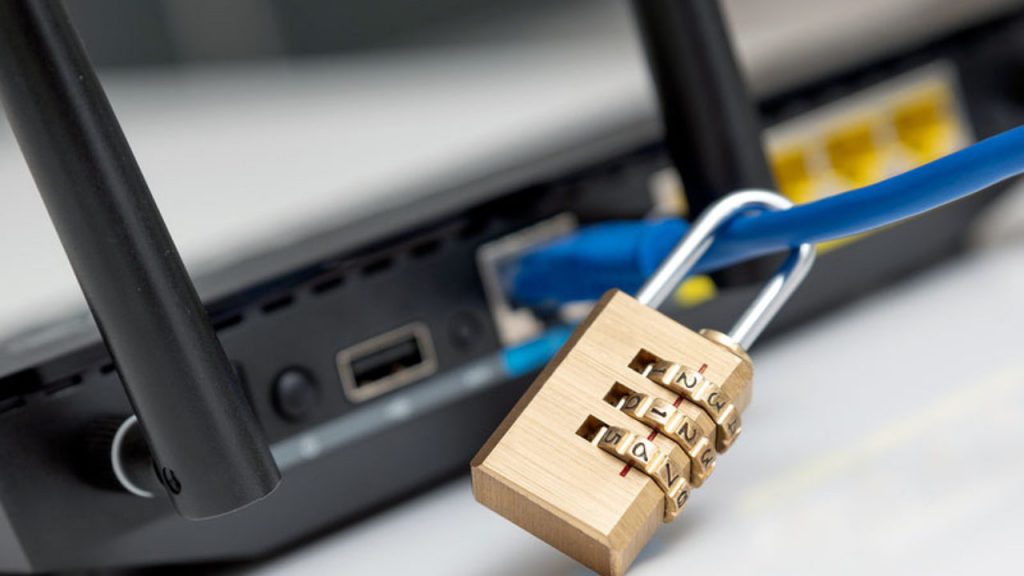Routers and wireless devices can be tricky to understand and set up, so people are afraid to adjust and configure them. They think that if they do, they might mess their device up, which is one of the reasons why many routers have poor WiFi encryption.
You might wonder, how do I configure my router to use WPA2? Read on because we will satisfy your curiosity and help you set up the best encryption method for a WiFi network to date.

How Do I Configure My Router to Use WPA2
Configuring a router is easy, and changing the encryption method is mainly done through the web-based configuration utility, which allows customizing the router’s settings. If the router supports it, you can change the encryption method via a dedicated setup utility.
To expand the paragraph above and get into more detail, we will give you a step-by-step guide on configuring your router to use WPA2 in the next section.
Step-By-Step Guide on How to Set Up WPA2 on a Router
If you understand what you are doing, you can configure any router, as practically all have similar ways to set up. We say this because it is impossible to give you specific instructions based on every router model, which is why we will provide a general guide.
If followed correctly, this guide will also help you set your router’s encryption to WPA2. These are the steps that you need to follow:
- Start by entering the router’s IP address in any Web browser’s address bar. Many routers often use 192.168.0.1 or 192.168.1.1
- After entering the router’s IP address, a login window will appear, asking for a username and password. The word “admin” often works as both password and username for most routers.
- Once you gain access to the router’s configuration utility, search for the “Wireless Settings” tab, where another tab called “Wireless Security” should be located.
- If you cannot find the “Wireless Security” tab, then simply look for it under the “General Security” tab.
- The “Wireless Security” tab is where you configure your router to use WPA2. Select it from all the available options.
- If there is also an option to choose the encryption method, choose AES instead of TKIP, as it offers more security.
Advantages of WPA2
Other than solving WEP security issues, WPA2 also filled the gaps in security that the initial WEP was facing. Problems like authentication forging, key collision, weak passkeys, brute force attacks, etc.
Paul Arana’s report from 2006 states that incorporating the AES encryption method within WPA2 brings even more security updates over WPA’s TKIP method. According to Arana, “AES has no known attacks, and the current analysis indicates that it takes 2120 operations to break an AES key.” (p. 4) of his report.
That being said, WPA2 offers almost impenetrable security measures, making it very difficult for hackers to access a network. Weak passwords may be subject to brute force attacks, but using a strong password with letters and special characters is almost impenetrable. That is one of the most significant benefits of using WPA2.
WPA2 also provides PMK caching support, which makes it possible for computers and devices in one network to reconnect with the Access Point without the need to reauthenticate if they accidentally disconnect. This means that once entered; the passkey is saved in the device’s cache, which is later used to reconnect to the Access Point automatically.
Read more: How to Configure Router to Use WPA3
Differences Between WPA2-Personal and WPA2-Enterprise
To better understand WPA2 and avoid confusion on whether you should use WPA2-Personal or WPA2-Enterprise, we will distinguish between them and tell you all the differences.
WPA2-Personal was developed to protect and secure home networks, using pre-shared keys(PSK) to encrypt them. This means that one password is set to the router or access point, which applies to all the devices connected to the network. Wireless access and configuration are also not centrally managed from one device.
WPA2-Enterprise was developed to secure business environments and large organizations with numerous devices. Unlike WPA2-Personal, which uses PSK, WPA-2 Enterprise uses IEEE 802.1x encryption, which is more secure for more extensive networks.
This encryption method also supports 802.1x RADIUS, where RADIUS stands for a separate server on the same network. This separate server stores all primary essential data and files, which are pre-shared to all devices and secured with higher levels of encryption to avoid unauthorized breaches.
Using WPA2-Enterprise also means that users don’t enter the network’s passkey to gain access but instead type in their unique login data, after which a passkey is generated from the server automatically. With this encryption method, they cannot find and see the network’s dedicated passkey.
Also read: Where to Find Network Security Key on Router?
Devices That Do Not Support WPA2
It is worth noting that not all devices can support WPA2. This is extremely rare and possible in several situations:
- If your router is older and you bought it before 2006. Routers can operate for a very long time, so it can be possible that you still rely on an old device. Routers manufactured before 2006 will not support WPA2.
- Older PCs running Windows XP service pack 1 will find it difficult to connect to a WiFi network with WPA2 encryption, as Windows XP came out in 2001.
- Obsolete but still working network cards on older PCs will also be unable to connect to a WPA2 secured network since they might only support the WEP encryption method.
Conclusion
Using WPA2 as your primary WiFi encryption method is the best choice you can make, and now that you no longer have to ask yourself how do I configure my router to use WPA2 encryption, you will set it up in no time.
Always combine WPA2 with AES for the best protection, and use a strong password consisting of different letters and characters.